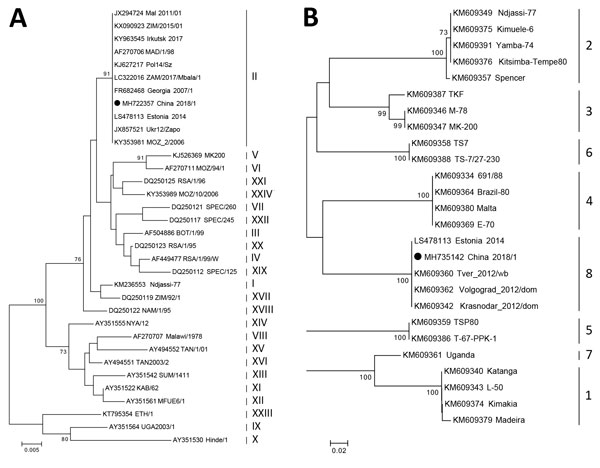Volume 24, Number 11—November 2018
Research Letter
Molecular Characterization of African Swine Fever Virus, China, 2018
Figure

Figure. Phylogenetic analysis of a causative virus strain (China 2018/1) of an African swine fever outbreak, China, 2018. A) p72 genotype; B) CD2v serogroup. The neighbor-joining method and Kimura 2-parameter model were used for construction of phylogenetic trees in MEGA 5.0 software (https://www.megasoftware.net/). Numbers along branches indicate bootstrap values >70% (1,000 replicates). Black circles indicate causative virus from this study. Roman numerals to the right in panel A indicate p72 genotypes. Numbers to the right in panel B indicate CD2v serogroups. GenBank accession numbers are provided for all sequences. Scale bars indicate nucleotide substitutions per site.
1These authors contributed equally to this article.
Page created: October 17, 2018
Page updated: October 17, 2018
Page reviewed: October 17, 2018
The conclusions, findings, and opinions expressed by authors contributing to this journal do not necessarily reflect the official position of the U.S. Department of Health and Human Services, the Public Health Service, the Centers for Disease Control and Prevention, or the authors' affiliated institutions. Use of trade names is for identification only and does not imply endorsement by any of the groups named above.